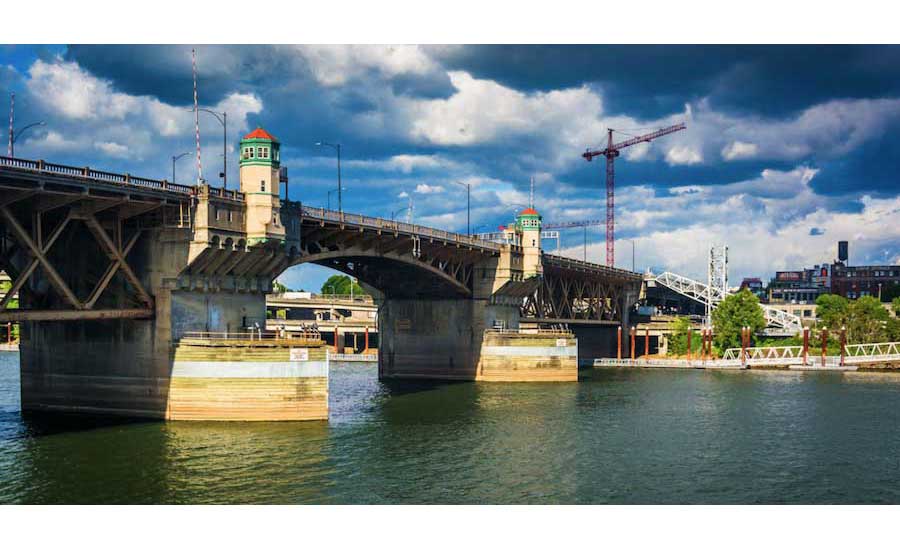Multnomah County knows it needs a seismic fix to the 92-year-old Burnside Bridge over the Willamette River in downtown Portland. County officials just aren’t sure how they are going to pull it off.
In an effort that kicked off in fall 2016, the county, which owns the bridge, settled on an initial set of five solutions for the bridge, including doing nothing, a seismic retrofit, an enhanced seismic retrofit that includes replacing spans over Interstate 5, a full replacement or choosing to enhance another bridge across the Willamette River. Those five options were selected from 100 variations initially investigated.
On the same day that a new study came out saying that a Cascadia Subduction Zone earthquake could displace 85,000 Portland metro residents and injure 27,000 people, the county announced it had eliminated three of the five Burnside Bridge solutions. Officials narrowed the final choices down to either a full replacement of the bridge or the retrofit option that includes replacing sections connecting to I-5 and the Union Pacific rail line to avoid disrupting freeway traffic through the busy downtown corridor.
Next up, the county will judge the two final options this spring to see how well they fit selected criteria. Officials will consider seismic resiliency, support of non-motorized transportation, connectivity to the street system, transportation equity for marginalized communities, ensuring minimal impact to existing land use and showing quality financial stewardship of public funds.
Multnomah County expects to pick a final option by fall 2018. The two-year process follows federal law that requires the county to study every option and its impacts.
No matter the final choice, the next stage will require design planning that determines the future look of the 1926-opened bridge. If a new build, the county will then need to figure out whether to keep the bridge as a moveable structure, as it is now, or go a completely different route and build a high bridge without an opening.
The timeline for the new project has construction starting by the end of 2023 and wrapping by the end of 2028. Currently, the county expects to need $80 for design and $415 million for construction.
Follow Tim Newcomb on Twitter at @tdnewcomb.


Post a comment to this article
Report Abusive Comment